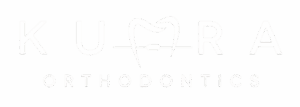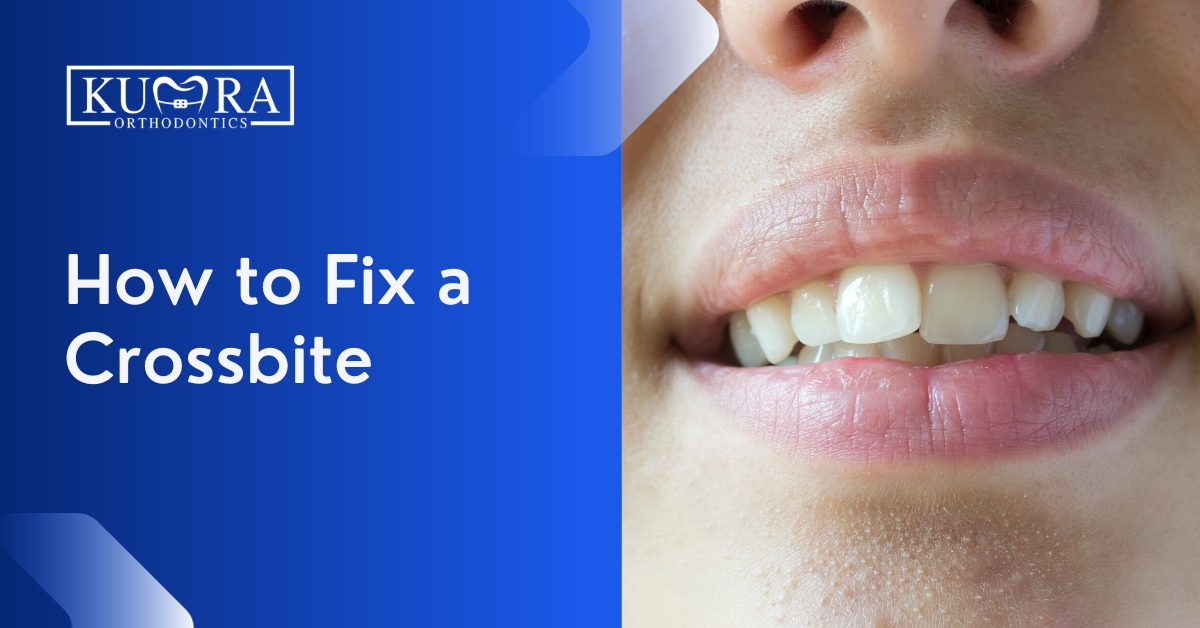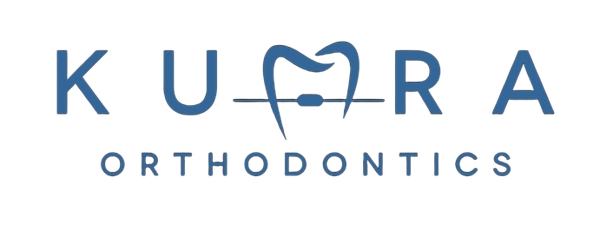Dealing with a crossbite can be more than just a cosmetic issue; it’s a dental condition that, if left untreated, can lead to a host of oral health problems. This misalignment, while common, can cause issues ranging from gum disease to jaw pain. Furthermore, it can contribute to abnormal wear of tooth enamel and even lead to difficulties in speaking and eating. Early intervention is key in managing a crossbite, as it can prevent these complications and promote better oral hygiene.
In this comprehensive guide, we will explore the effective strategies and treatments on how to fix a crossbite, ensuring that you can achieve not only a more aesthetically pleasing smile but also a healthier one.
What is a Crossbite?
A crossbite is a dental condition where the alignment of the teeth is irregular, typically characterized by one or more upper teeth biting inside the lower teeth. This misalignment can occur at the front (anterior crossbite) or the sides (posterior crossbite) of the mouth. Unlike a normal bite where the upper teeth sit slightly over the lower teeth, a crossbite can cause uneven wear on teeth, lead to jaw problems, and may even affect facial symmetry. It can be caused by a variety of factors, including genetics, delayed loss of baby teeth, or abnormal jaw growth. Addressing a crossbite is not just important for cosmetic reasons; it’s also crucial for maintaining oral health, as it can impact chewing, speaking, and lead to other dental issues if left untreated.
Importance of Early Crossbite Correction
Early correction of a crossbite is pivotal for several reasons. Addressing this misalignment promptly can prevent a host of potential complications that can worsen over time. Untreated crossbites can lead to uneven wear and tear of the teeth, increased risk of tooth decay and gum disease, and can even cause jaw pain or temporomandibular joint disorders (TMJ).
Early intervention is particularly important in children, as it can utilize the natural growth processes to correct teeth misalignment more effectively and potentially reduce the need for more invasive treatments later in life. Moreover, correcting a crossbite can significantly improve the appearance of the smile, boost self-confidence, and contribute to better overall oral health. By tackling this issue early, patients can enjoy a more functional bite, a healthier mouth, and a more aesthetically pleasing smile.
Crossbite Symptoms
A crossbite is a common dental condition that can lead to several complications if not addressed. Recognizing the symptoms early can be key to seeking timely treatment. Here are some of the main symptoms that indicate the presence of a crossbite:
Misaligned Teeth
The most obvious sign of a crossbite is the noticeable misalignment of teeth. You may observe that one or more of your upper teeth are biting behind your lower teeth, instead of fitting slightly over them. This misalignment can be visible either at the front (anterior crossbite) or on the sides (posterior crossbite) of the mouth.
Difficulty Chewing
Individuals with a crossbite often experience challenges in chewing. The abnormal alignment of teeth disrupts the natural biting and grinding motion, making it difficult to chew food effectively. This can lead to digestive issues due to improperly chewed food and can also cause discomfort while eating.
Speech Issues
A crossbite can impact speech, leading to lisping or other articulation problems. This is because the position and alignment of teeth play a crucial role in the way we produce certain sounds. When teeth are misaligned, as in the case of a crossbite, it can affect the normal placement and movement of the tongue and lips during speech, leading to noticeable speech impediments.
Jaw Pain or Discomfort
The misalignment can create an uneven bite force distribution, leading to strain on the jaw muscles and joints. This can result in persistent jaw muscle pain, discomfort, or even headaches. In some cases, it can contribute to the development of temporomandibular joint disorders (TMJ), a condition that affects the jaw joint and surrounding muscles.
Types of Crossbites
Crossbites can affect a single tooth or a group of teeth and can have various implications on oral health and aesthetics. Understanding the different types of crossbites is crucial for effective treatment and management. Here, we explore the main types of crossbite:
Anterior Crossbite
An anterior crossbite occurs when the upper front teeth sit behind the lower front teeth. This type of crossbite is often more noticeable due to its location in the front of the mouth. It can affect a single tooth or several front teeth. Anterior crossbites can lead to increased wear on the teeth involved, potential damage to the gums, and can sometimes affect speech.
Posterior Crossbite
A posterior crossbite affects the back teeth. It occurs when the upper back teeth bite down inside the lower back teeth. This teeth misalignment can be on one or both sides of the mouth. Posterior crossbites can cause uneven wear on the teeth, leading to bad chewing habits, jaw pain, and in some cases, can contribute to the development of TMJ disorders.
Unilateral Crossbite
Unilateral crossbite refers to a crossbite that is present on only one side of the mouth. This asymmetrical alignment can lead to a shift in the jawline when the person bites down, potentially resulting in jaw pain and a visibly asymmetrical appearance of the jaw and face.
Bilateral Crossbite
In contrast, a bilateral crossbite is when both sides of the mouth are affected. This type of crossbite can lead to a more symmetrical but still problematic bite, as it affects the overall alignment of both the upper and lower jaws, potentially causing significant functional challenges and aesthetic concerns.
Scissor Bite
A scissor bite is a variant of a crossbite where the upper teeth completely overlap the lower teeth, similar to the blades of a scissor. It typically occurs on the sides of the mouth and can lead to significant issues such as difficulty in chewing, excessive wear of the teeth, and can sometimes cause gum recession.
Long-term Effects of a Crossbite
A crossbite can lead to a range of long-term effects that impact both oral health and overall well-being if left untreated. Here’s a closer look at the long-term effects of a crossbite:
Increased Tooth Wear and Damage
One of the most immediate effects of a crossbite is uneven wear on the teeth. Since the teeth are not aligned properly, they can rub against each other in abnormal ways. This can lead to excessive wear of the enamel, increasing the risk of tooth decay, sensitivity, and in severe cases, tooth loss.
Gum Disease and Recession
A crossbite can also affect gum health. The abnormal alignment of teeth can put extra pressure on certain areas of the gums, leading to recession. Gum recession exposes the roots of the teeth, making them more susceptible to decay and sensitivity. Additionally, the uneven bite can make it harder to clean teeth effectively, increasing the risk of periodontal disease.
Jaw Pain and TMJ Disorders
Misalignment from a crossbite can strain the jaw muscles and joints, leading to chronic jaw pain, headaches, and even temporomandibular joint (TMJ) disorders. TMJ disorders can cause discomfort, clicking or popping noises when moving the jaw, and in some cases, can lead to more serious joint problems.
Sleep Apnea and Breathing Issues
In severe cases, a crossbite can contribute to mouth breathing issues during sleep, such as sleep apnea. This is particularly true in cases where the crossbite is associated with a misaligned jaw, affecting the airway.
Aesthetic Concerns and Reduced Self-Esteem
Beyond the physical health implications, a crossbite can affect one’s appearance and, consequently, self-esteem. People with untreated crossbites may become self-conscious about their misaligned smiles, impacting their social interactions and overall quality of life.
Needing an orthodontic appointment?
Visit Kumra Orthodontics Washington, DC or Kumra Orthodontics Stafford, VA, and request an appointment with us!
How to Fix a Crossbite with Orthodontic Treatments
Correcting a crossbite is essential for both oral health and aesthetics. Thanks to advancements in orthodontics, there are several effective treatment options available to address this common dental misalignment. Here’s a guide on how orthodontic treatments can be used to fix a crossbite:
Braces
Traditional braces treatment is one of the most common methods for correcting a crossbite. They work by applying continuous pressure to the teeth, gradually shifting them into the correct position. Braces can be particularly effective for more complex crossbite cases and can align both the teeth and jaw over time.
Clear Aligners
Clear aligners, such as Invisalign, offer a less visible alternative to traditional braces. These custom-made, removable aligners are designed to move teeth gradually into their correct position. Clear aligners are a popular choice for adults and teens looking for a discreet orthodontic treatment option.
Read More: Can Invisalign Fix a Crossbite?
Palatal Expander
A palatal expander is often used in children and adolescents whose jaws are still developing. This device is placed on the upper jaw and works by gradually widening the upper palate. This widening helps in correcting crossbites caused by a narrow upper jaw, allowing the upper teeth to fit properly over the lower teeth.
Surgical Orthodontics
In severe cases, particularly in adults, where the jawbone has stopped growing, surgical orthodontics may be necessary. This treatment involves orthognathic surgery to correct jaw irregularities, followed by orthodontic braces to align the teeth properly.
Crossbite Correction FAQs
How long does it take to fix a crossbite?
Correcting a crossbite can vary in duration depending on several factors, including the severity of the crossbite, the specific treatment method used, and the patient’s age. Generally, treatment can take anywhere from several months to a few years. For children and adolescents, whose jaws are still developing, the treatment may be quicker and less complicated. In adults, the process can take longer due to the maturity of the jawbone and teeth.
What is the fastest way to correct crossbite?
The fastest way to correct a crossbite is typically through early intervention, particularly in children and adolescents. In these cases, devices like palatal expanders can be very effective, as they utilize the natural growth process of the jaw to correct the alignment. For adults, clear aligners or braces might provide a quicker solution for less severe crossbites, but the speed of treatment still varies based on individual cases.
Is crossbite correction in adults possible without surgery?
Crossbite correction in adults without surgery is indeed possible, especially for less severe cases. Orthodontic treatments like braces or clear aligners can effectively correct a crossbite by gradually moving the teeth into the correct position. However, the treatment might take longer compared to children or adolescents, as adult teeth and bones are more settled.
When is crossbite surgery necessary?
Crossbite surgery becomes necessary typically in severe cases or where the misalignment involves the jaw and cannot be corrected with orthodontics alone. This is more common in adult patients, where the jawbone has fully developed and stopped growing. Surgery, usually orthognathic surgery, is used to correct the jaw’s position, followed by braces to align the teeth properly. Such procedures are considered when orthodontic treatments alone are insufficient to correct the issue.
Discover Effective Solutions for Crossbite at Kumra Orthodontics
Fixing a crossbite is a journey towards not only enhancing your smile but also improving your overall oral health. Whether through braces, clear aligners, palatal expanders, or even surgery, the path to correcting a crossbite is filled with transformative possibilities. Each treatment plan is tailored to meet individual needs, ensuring that every patient receives the most effective care.
Embark on your journey to a perfect smile with the expert team at Kumra Orthodontics. Our state-of-the-art clinic is equipped with the latest in orthodontic technology, and our expert orthodontists are dedicated to ensuring the best outcomes for our patients. Don’t let a crossbite hold you back from the confidence and comfort of a beautifully aligned smile. Book your appointment now.



